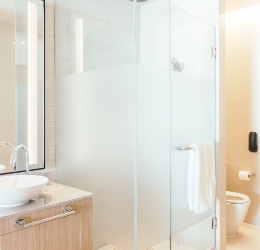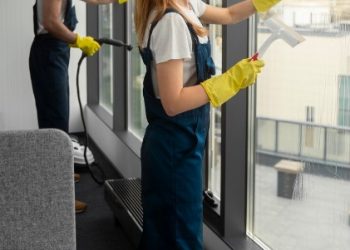Maintaining a well-sealed chimney is crucial for preventing water damage, ensuring proper ventilation, and maximizing the lifespan of your chimney. Chimney sealing in Lakewood, CO involves applying a waterproof sealant to the exterior masonry to protect against moisture infiltration. However, the frequency of chimney resealing can vary depending on several factors. In this article, we will discuss the key considerations for determining how often you should reseal a chimney.
Type of Sealant Used
The longevity of chimney sealants can vary depending on the type of product used. There are different types of sealants available, such as silicone-based sealants, acrylic-based sealants, and penetrating sealers. Each type has its own durability and lifespan.
Silicone-Based Sealants
Silicone-based sealants are known for their excellent water resistance and durability. They can provide protection for an extended period, often ranging from 5 to 10 years. These sealants create a flexible barrier that can withstand temperature changes and movement of the masonry.
Acrylic-Based Sealants
Acrylic-based sealants offer good waterproofing properties and are commonly used for chimney sealing. They typically last between 3 to 7 years, depending on the quality of the product and the exposure to weather conditions.
Penetrating Sealers
Penetrating sealers are designed to penetrate into the masonry, forming a chemical barrier that repels water while allowing the chimney to breathe. The lifespan of penetrating sealers can vary, but they often provide protection for several years, up to 10 years in some cases.
Weather Exposure
The level of exposure to weather elements plays a significant role in determining the frequency of chimney resealing. Chimneys that are subjected to harsh weather conditions, such as heavy rainfall, snow, or extreme temperature fluctuations, may require more frequent resealing.
Rainfall
If your chimney is located in an area with high rainfall, the frequency of resealing may be higher. Excessive exposure to rainwater can accelerate the deterioration of the sealant, making it necessary to reseal the chimney more frequently.
Freezing and Thawing
Regions with cold winters and frequent freeze-thaw cycles can place additional stress on the chimney. The expansion and contraction caused by freezing and thawing can compromise the integrity of the sealant over time. In such areas, it may be advisable to reseal the chimney more frequently, typically every 3 to 5 years.
Visual Inspection
Performing regular visual inspections of your chimney can help identify signs of sealant deterioration. Look for any cracks, gaps, or areas where the sealant appears worn or damaged. If you notice any issues during your inspection, it’s important to address them promptly by resealing the affected areas.
Pay attention to the chimney crown, chimney cap, flashing, and the joints between bricks or stones. These are common areas where sealant may deteriorate more quickly due to exposure and movement.
If you notice water stains or dampness on the interior walls near the chimney, it could be an indication of sealant failure. In such cases, consider resealing the chimney and addressing any water intrusion issues.
Conclusion
The frequency of chimney resealing depends on various factors, including the type of sealant used, weather exposure, and visual inspection of the chimney’s condition. Generally, chimney resealing is recommended every 3 to 10 years, depending on the factors mentioned above. It’s essential to consult with a professional chimney expert who can assess your specific chimney’s condition and provide guidance on the appropriate timing for resealing. Regular maintenance, including resealing when necessary, ensures the longevity, safety, and optimal performance of your chimney system.









